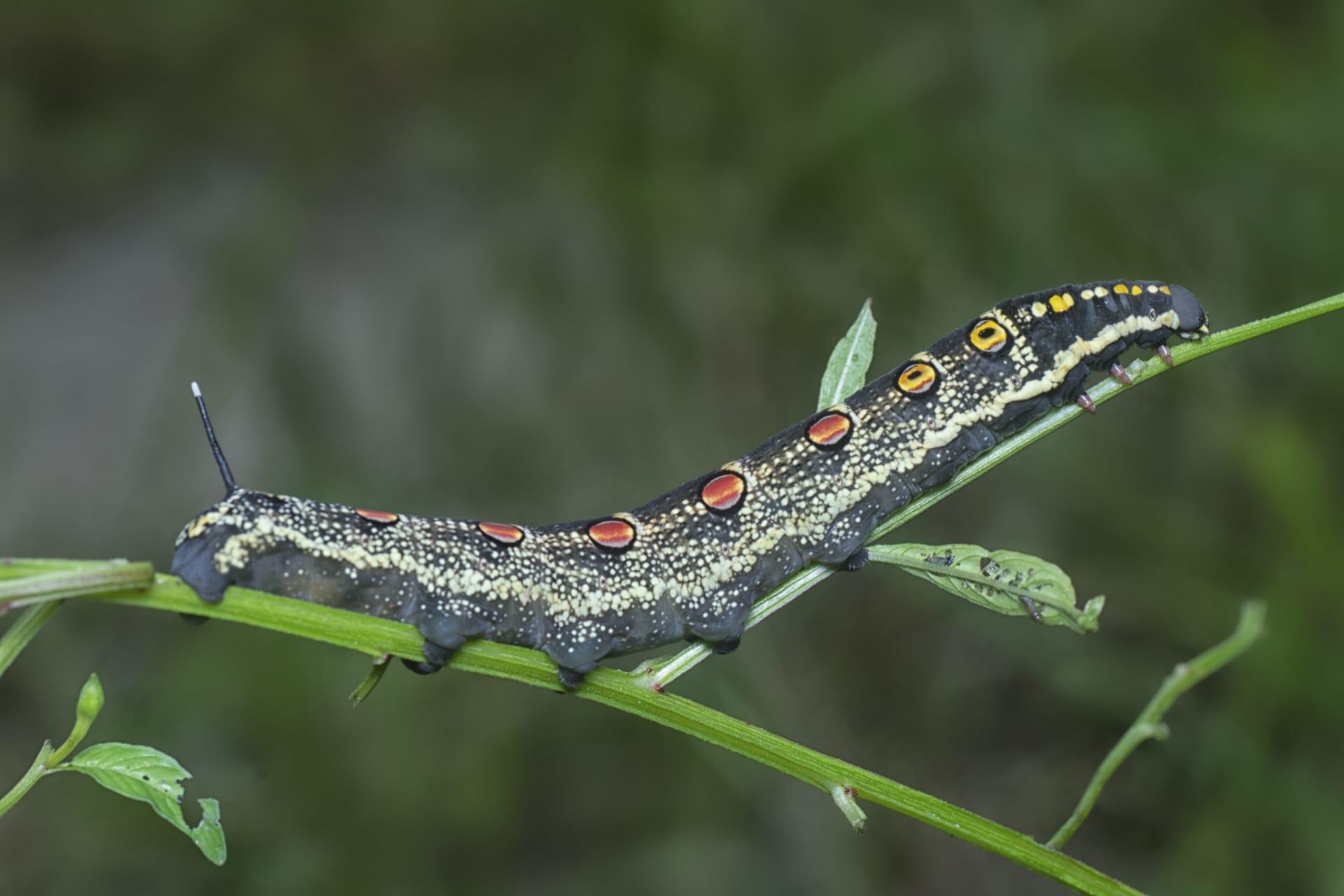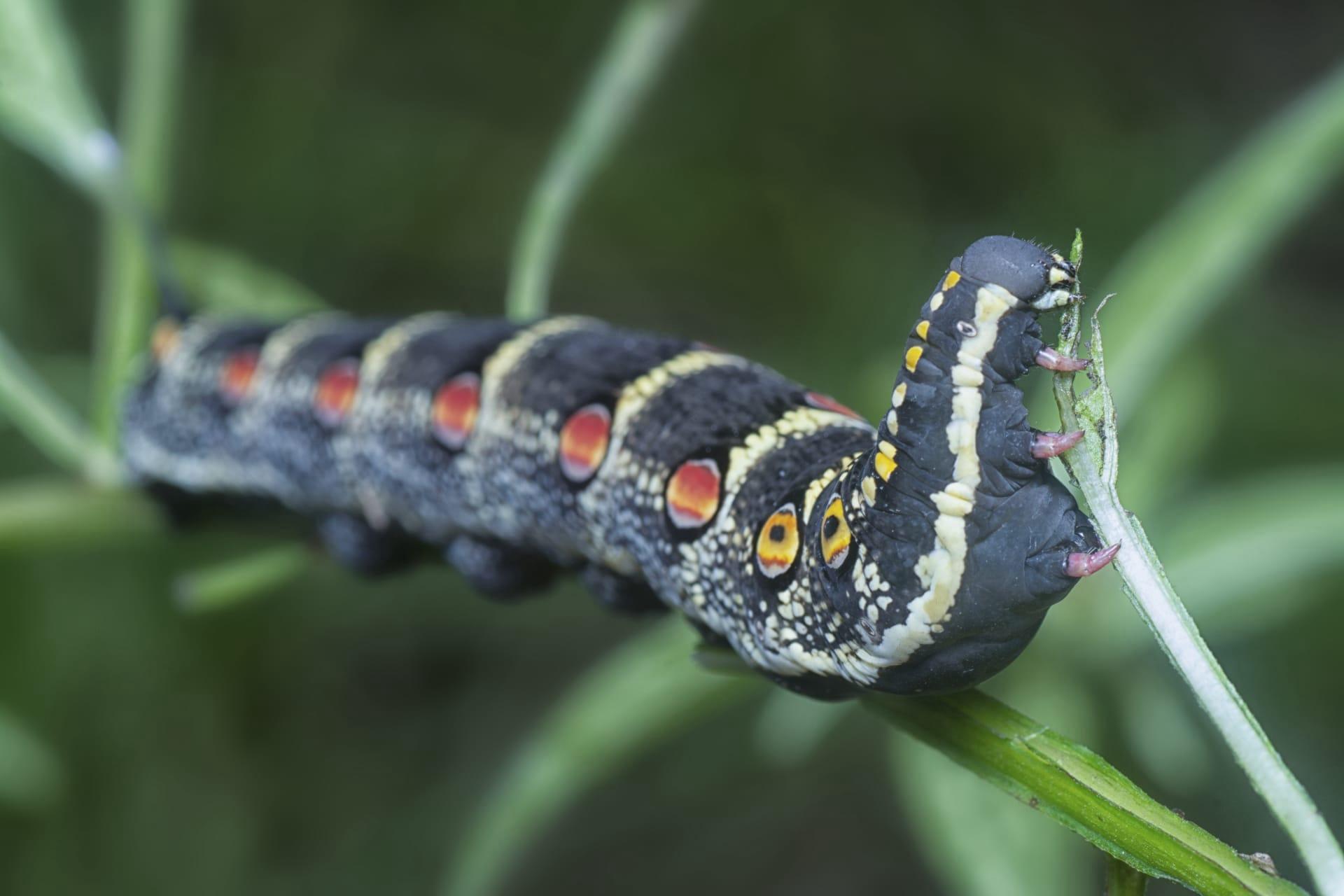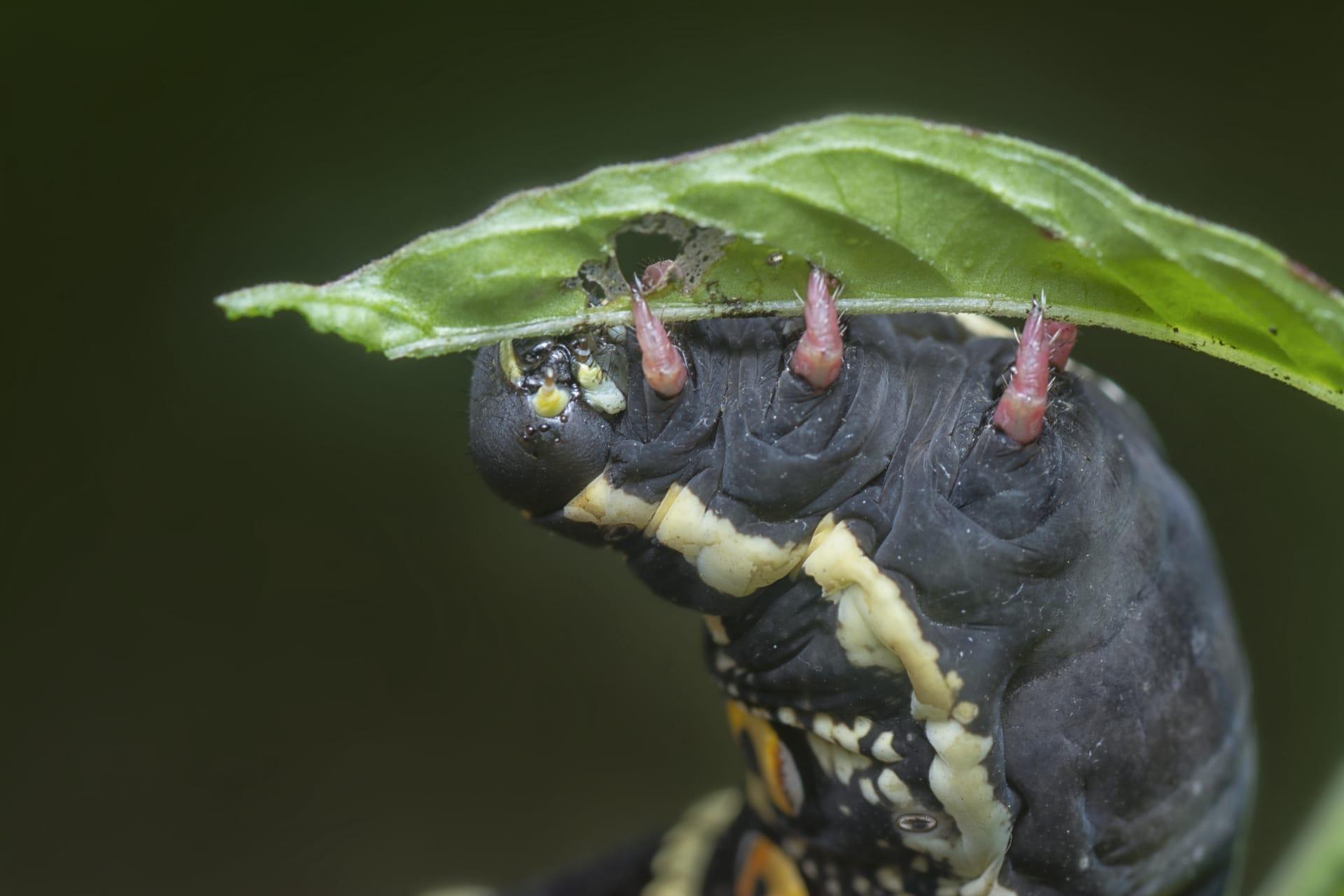1
Horn worms, specifically the tomato hornworm and the tobacco hornworm, are known for their striking horn-like appendages at their rear. But here's a twist: these 'horns' are completely harmless. They are actually a false eye spot, meant to scare off predators. These caterpillars can grow up to 4 inches long, making them one of the largest in their larval stage. The color of these caterpillars can be a vivid green or a subtle gray-green, helping them blend into the plants they feed on.
Another fascinating fact about horn worms is their appetite. These creatures are voracious eaters and are particularly fond of plants from the Solanaceae family, which includes tomatoes and tobacco. A single horn worm can consume an entire tomato plant leaf in less than a day. Their eating habits are so efficient that they can strip a plant of its foliage in a matter of days, which is why they are often considered pests in gardens and farms.

2
Horn worms have a unique defense mechanism against predators. When threatened, they can emit a loud clicking sound by forcefully expelling air from their spiracles (breathing holes). This sound can startle small predators like birds and give the horn worm a chance to escape. Additionally, some horn worms can secrete a mild toxin from their skin, which deters smaller predators and can leave an unpleasant taste if ingested.
The life cycle of a horn worm is quite remarkable. After hatching from eggs, they go through five growth stages, known as instars, in just 20-30 days. During each instar, they shed their skin, and with each successive molt, their size increases significantly. After completing their growth, they burrow into the ground to form a pupa. The adult moth emerges from the pupa after about three weeks, starting the cycle anew. These moths are often mistaken for hummingbirds due to their size and flight patterns.

3
Horn worms are not just ground-dwellers. In their final larval stage, they are known to climb to the top of their host plants. This behavior is thought to be a strategy to avoid ground predators and to find a suitable place for pupation. Once they reach a high point, they drop to the ground and burrow into the soil to pupate.
The natural coloration of horn worms provides an excellent camouflage, but there's more to it. When these caterpillars are infected by a parasitic wasp, their color changes. The wasp larvae feed inside the horn worm, and as they develop, they cause the caterpillar to take on a swollen, whitish appearance. This color change serves as a warning sign to other predators that the horn worm is less palatable.

4
Horn worms have a unique relationship with the plants they consume. While they are notorious for their destructive eating habits, they also play a role in plant health. The caterpillars' frass (excrement) is high in nutrients, which can enrich the soil and promote plant growth. This is a small but significant contribution to the ecosystem, particularly in natural settings where soil fertility is crucial.
The sensory capabilities of horn worms are quite advanced. They have tiny hairs on their bodies that are sensitive to touch and vibration. These hairs help them detect the presence of predators or other dangers. Additionally, their eyes are adapted to see ultraviolet light, which aids them in finding food and navigating their environment, especially at night.

5
Horn worms have an interesting way of dealing with extreme temperatures. During hot days, they can be found deep in the foliage or soil to avoid the heat. Conversely, on cooler nights, they climb up the plants to stay warm. This behavior demonstrates their ability to adapt to varying environmental conditions for survival.
The metamorphosis of horn worms into moths is a spectacular process. The transformation inside the pupa involves the breakdown of the caterpillar's body and the formation of a new body structure as a moth. This process is one of the most drastic and fascinating transformations in the insect world. The moths, once emerged, have a wingspan of up to 5 inches and exhibit striking patterns, making them not just a pest, but also a remarkable part of the natural world.